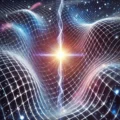Particle-Wave Nature of Energy
Abstract
Electromagnetic (EM) energy demonstrates an intricate duality, traditionally understood as both particle-like and wave-like behavior. This paper revisits the foundational concepts of this duality through the lens of Charge-Anti-charge (CA) theory. By re-examining how photon disturbances create waves in an electromagnetic field, we explore the mechanisms through which EM energy propagates, highlighting the critical role of impedance and polarization effects in this process.
Introduction
EM energy is widely recognized for exhibiting both particle and wave properties, an observation central to quantum mechanics. This duality, typically understood through the behavior of photons (as discrete energy quanta) and the formation of electromagnetic waves, demands a deeper explanation. In this paper, we aim to clarify how energy disturbances caused by photon emissions interact with fields to produce both particle-like and wave-like phenomena.
Charge-Anti-Charge Origin of Photons
Under CA theory, photons are born out of the interaction of Zero-Point Energy (ZPE) fields, manifesting as a charge and anti-charge pair. These charges are paired with opposing polarities and spin characteristics, constrained by the fundamental properties of time symmetry. As a photon disturbance enters the surrounding electromagnetic field (μ0ε0 lattice), its charge components displace the field in a localized region, giving rise to its particle-like nature. This disturbance marks the initial transition from particle to wave, as the surrounding field absorbs the photon’s energy.
Impedance Matching and Wave Formation
The key to understanding the transition between photon and wave lies in the impedance properties of space. As the photon energy disturbance propagates, it interacts with the impedance of the medium. If the impedance remains constant, the photon’s energy is smoothly absorbed into the field, creating a propagating wave without radiating additional energy externally. This is why, within a homogeneous field with consistent impedance, energy remains internalized in the wave and does not scatter. However, if the impedance changes—as it might at material boundaries or field discontinuities—this can cause refraction, reflection, or diffraction, revealing the wave-like behavior of the energy.
Photon-Particle Manifestation
While photon energy is absorbed and converted into wave propagation, its particle-like nature is still apparent in how it creates localized disturbances. These disturbances have specific energy levels and spin characteristics, reflecting the angular displacement of charge pairs at their origin. The energy is initially contained within these charge fields before it is released into the broader electromagnetic field.
Wave Propagation: Oscillatory Nature of EM Fields
Once the photon’s energy has been absorbed by the surrounding field, it propagates as an electromagnetic wave. This wave is characterized by oscillatory behavior, with the plane and direction of oscillation determined by the original orientation and spin of the photon charges. In this wave form, the energy travels through space at the speed of light, exhibiting properties like polarization, refraction, and reflection, all of which are contingent upon the impedance of the field.
Impedance and the Resolution of Duality
The duality observed in the behavior of EM energy, particularly in experiments such as the double-slit experiment, can be explained through the concept of impedance matching and the interaction of the energy wave with field boundaries. In scenarios where the impedance of the medium changes—such as when EM waves pass through slits or other apertures—the energy is forced to adjust to the new field properties, manifesting as diffraction patterns or interference. This explains why the dual nature of light is observed, not as an intrinsic characteristic of the photon but as a result of how its energy is distributed in varying impedance landscapes.
Conclusion
The particle-wave duality of EM energy, as explained through CA theory, is not a paradox but a natural consequence of how energy interacts with electromagnetic fields. Photons, as charge and anti-charge pairs, create disturbances that result in wave propagation when entering a uniform impedance field. Impedance mismatches, such as those encountered in materials or boundaries, reveal the wave-like nature of the energy, while the localized nature of the initial disturbance accounts for the particle-like properties. This unified understanding of EM energy provides deeper insight into the behavior of energy across different scales, from photons to waves, and the critical role of field impedance in shaping energy interactions.
